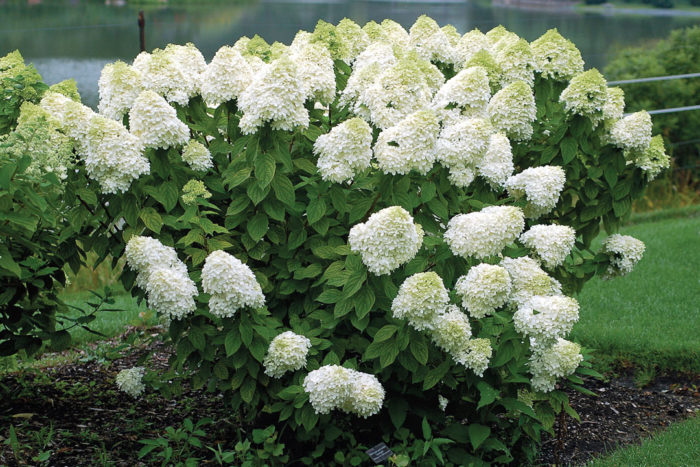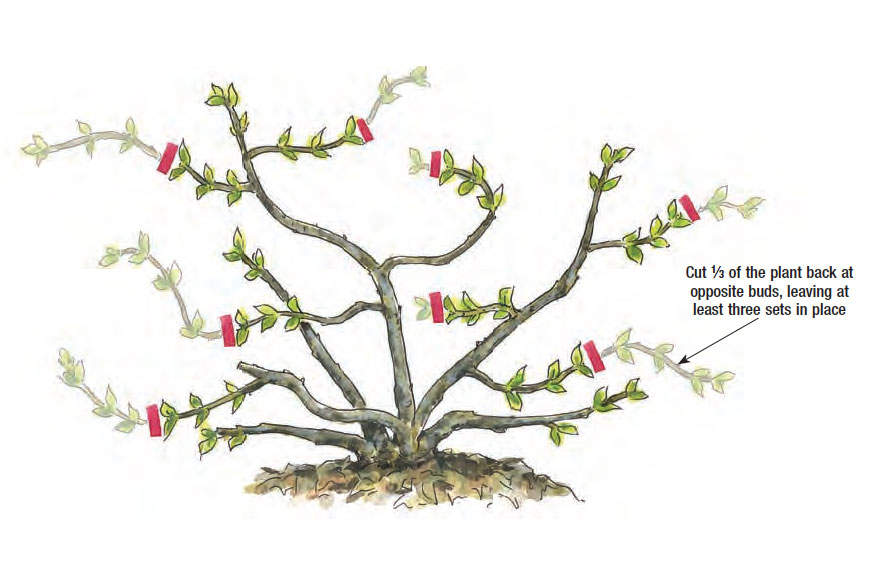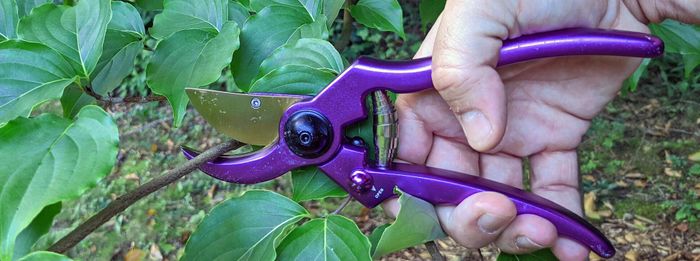How to Prune Panicle Hydrangeas
Early spring is the best time for cutting back these popular shrubs

Pruning Basics for Panicle Hydrangeas
(Hydrangea paniculata and cvs., Zones 3–8)
You may have purchased a panicle hydrangea either as a shrub or as a plant with an elevated head, called a tree form or “on a standard” in the nursery industry. Both can be pruned in the same way.
When to prune: Early spring is best, when the first green new growth appears but the threat of frost has passed.
How to prune: Your primary attack comes in early spring, when you see those green eyes peeking out from the branches. Grab your bypass pruners, because it’s cutting time! These plants have opposite buds (buds that form opposite to each other along the stems). Before starting to prune, identify those sets that are pointing almost parallel to the ground (basically one “eye” is pointing up toward the sky, and the other is pointing down). These are the buds you’ll be cutting back to, because this forces the plant to grow outward instead of pushing growth inward and ultimately crowding out the interior of the plant. The idea is to remove around a third of the overall plant, pruning back each branch radiating from the main trunk but making sure that you’re leaving at least three sets of buds behind as you cut into the plant. Cutting more of the plant (especially when it is young) could restrict growth too much and limit the flower show. The overall goal is to make your plants look like deer antlers or a coat rack. In some cases, you may be pruning very hard into wood the size of your thumb, but don’t worry. This isn’t detrimental.
To get larger flowers (but not as many), remove one of the two opposite buds that will push where your pruning cut was made. You can wait until the stems that form from these buds get to about 6 inches. For lots of smaller flowers, leave the outside buds on.
A bit later in spring, you’ll start to see buds forming on the interior of the plant. Just pluck them off with your fingers. These inner buds will rob some of the plant’s resources to produce large flowers. They’ll also push branches into the inner plant, causing crowding. You’d have to prune these branches off later with a tool, so it’s easier to take care of the problem early using just your fingers.
Other plants that benefit from this approach
- Viburnum (Viburnum spp. and cvs., Zones 2–9)
- Chaste tree (Vitex spp. and cvs., Zones 6–9)






Comments
Log in or create an account to post a comment.
Sign up Log in